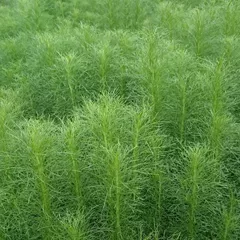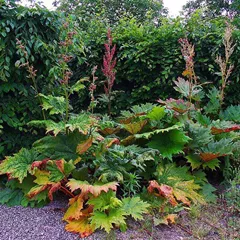Damp-Heat in the Liver
The information provided here is not a replacement for a doctor. You shouldn't use it for the purpose of self-diagnosing or self-medicating but rather so you can have a more informed discussion with a professional TCM practitioner.
At a glance
Preliminary reading: What is a pattern? The Liver in Chinese Medicine The concept of Dampness The concept of Heat
Key attributes
Chinese name: 肝湿热 Pinyin name: Gān Shī Rè
Pattern nature: Full
Pattern hierarchy: Specific pattern under Damp-Heat
Causes
Precursor patterns: Liver Qi Stagnation Spleen Qi Deficiency
Common causes: 1. Diet, 2. Emotional stress, 3. External Dampness
Diagnosis
Common symptoms: Nausea Dark Urine sticky taste Vulvar sores Poor appetite and sixteen other symptoms
Pulse type(s): Rapid (Shu), Wiry (Xian)
Tongue description: Red body with redder sides sticky yellow coating
Treatment
Treatment principle: Clear the Liver, resolve Dampness, clear Heat
Common formulas: Long Dan Xie Gan Tang Yin Chen Hao Tang
Pathology
This pattern is caused by excessive Heat in the Liver and Dampness due to Spleen Deficiency. Dampness is created if the Spleen's transportation and transformation function is impaired. When Damp-Heat builds up, the flow of Qi is disturbed, resulting in Qi Stagnation symptoms. When lasting for a long period of time, Dampness can cause the formation of Phlegm. Therefore, patients often have a feeling of fullness in the hypochondrium, abdomen or hypogastrium. They also feel general heaviness of the body.
Since Dampness has a tendency to flow downwards, it often settles in the Lower Burner, causing urinary Bladder infections, a burning feeling and vaginal discharge, itching and infection. It often manifests in the genitals, resulting in sores or eczema in this area.
Causes
Precursor patterns: Damp-Heat in the Liver can derive from Liver Qi Stagnation Spleen Qi Deficiency
Diet: Poor diet harms the Spleen function of transforming and transporting, such as prolonged and excessive consumption of cold and raw foods, excessive intakes of dairy foods and greasy foods, refined sugar, coffee and alcohol. Irregular diet and lifestyle habits can also be the cause.
Emotional stress: Emotional stress such as anger also contribute since they cause Liver Qi Stagnation.
External Dampness: External Dampness is a frequent cause for the formation of Damp-Heat, especially in hot tropical countries. The external Evils invades the Liver Channels though legs and eventually settle down in the Liver.
Diagnosing Damp-Heat in the Liver
Diagnosing a pattern in Chinese Medicine is no easy feat and should be left to professional practitioners. In particular one has to know how to differentiate between different types of pulses and tongue coatings, shapes and colors as well as learn to read from a long list of seemingly unrelated symptoms.
Pulse type(s): Rapid (Shu) or wiry (Xian)
Tongue description: Red body with redder sides sticky yellow coating
Main symptoms: Nausea Dark Urine sticky taste Vulvar sores Poor appetite Vulvar eczema Vaginal itching Midcycle bleeding Burning urination Abdominal fullness Urinary difficulty Feeling of heaviness Hypogastrium fullness Hypochondrium fullness Midcycle bleeding pain Yellow vaginal discharge Red and swelling scrotum Red and swelling genital Red and swelling papular Bitter taste in the mouth Vesicular skin rashes and itching
Diagnosis commentary: Key characteristic symptoms of this pattern are the fullness of hypochondrium, abdomen or hypogastrium, feeling of heaviness, nausea, bitter and sticky taste and sticky yellow tongue coating.
Treating Damp-Heat in the Liver
Treatment principle
Clear the Liver, resolve Dampness, clear Heat
Herbal formulas used to treat Damp-Heat in the Liver



The top herbs in Long Dan Xie Gan Tang are Chinese Gentian (Long Dan Cao), Baikal Skullcap Roots (Huang Qin) and Cape Jasmine Fruits (Zhi Zi)
Long Dan Xie Gan Tang
Source date: 1682 AD
Number of ingredients: 10 herbs
Key actions: Clears Heat and Fire from the Liver and Gallbladder. Clears and drains Damp-Heat from the Lower Burner.
Formula summary
Long Dan Xie Gan Tang is a 10-ingredient Chinese Medicine formula. Invented in 1682 AD, it belongs to the category of formulas that clear Heat from the Organs.
Besides Damp-Heat in the Liver, Long Dan Xie Gan Tang is also used to treat Stagnant Liver Qi turning into Fire or Liver Fire Blazing.



The top herbs in Yin Chen Hao Tang are Virgate Wormwood (Yin Chen), Cape Jasmine Fruits (Zhi Zi) and Rhubarb (Da Huang)
Yin Chen Hao Tang
Source date: 220 AD
Number of ingredients: 3 herbs
Key actions: Clears heat. Resolves dampness. Reduces jaundice.
Formula summary
Yin Chen Hao Tang is a 3-ingredient Chinese Medicine formula. Invented in 220 AD, it belongs to the category of formulas that clear Heat and expel dampness.
Besides Damp-Heat in the Liver, Yin Chen Hao Tang is also used to treat Damp-Heat in the Gallbladder or Damp-Heat.
Diet recommendations
Follow a balanced diet of grains, legumes, cooked vegetables, greens, winter squash and warm or room temperature drinks. Eat all cooked foods.
Avoid cold and raw foods and drinks, consumption of hot and greasy foods, dairy, nuts and nut butters, chips of all kinds, caffeinated foods and drinks, red meat, fruits, juices, iced drinks, ice cream and popsicles, salads, uncooked foods and the excessive use of sugar and other sweeteners. Avoid eating an irregular diet and at irregular times.
Try other therapies such as cupping over the back and breathing exercises.
Most importantly find a way to deal with negative emotions like anger, frustration, resentment, irritability, mood swings. It is better to express and release them instead of keeping them inside. Find a job or hobby that is enjoyable or fulfilling.
Avoid mental over-work, physical over-exertion or excessive sexual activity. Take proper rest after all these exercises or work. Try going to bed before 11 pm.
Try regular exercises such as Yoga, Tai Chi, or Qi Gong, swimming, dancing or walking in the nature.
Consequence patterns
Phlegm can form and accumulate due to long term Dampness.
